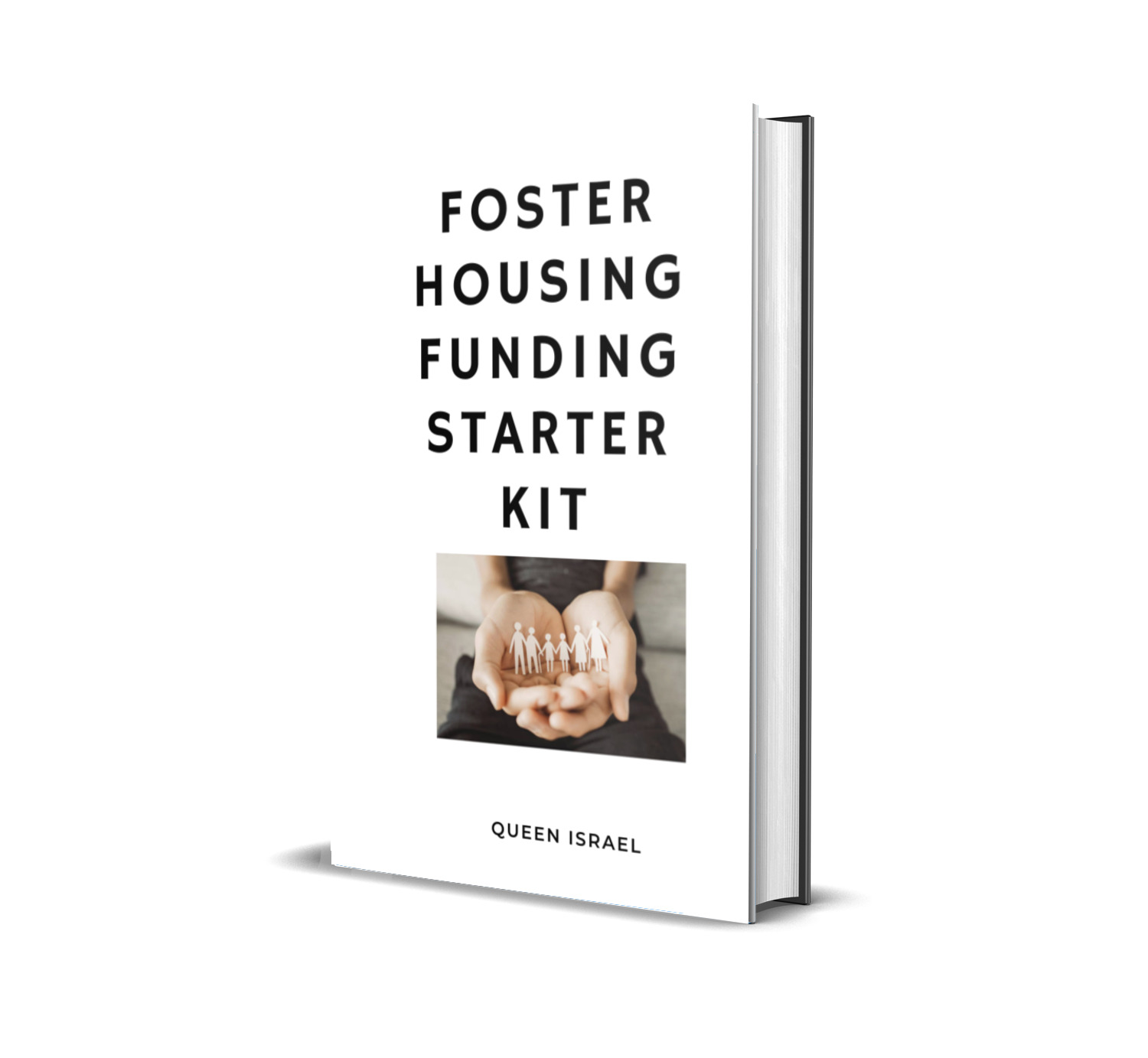Creating a safe, comfortable, and accessible living space is crucial for individuals with disabilities. Grants to make home handicap accessible provide invaluable financial assistance to transform homes, ensuring they meet specific accessibility needs, such as, to install ramps, widen doorways, or modify bathrooms, various grants can help turn these essential modifications into reality.
In this comprehensive guide, we’ll explore the different types of grants available, how to apply for them, and strategies to enhance your chances of approval.
Let’s embark on this journey to make your home a more accessible and inclusive space.
Understanding Handicap Accessibility and Home Modifications
Handicap accessibility involves making changes to your home that cater to the needs of individuals with disabilities. These modifications not only improve mobility but also enhance safety and independence. Common home modifications include:
- Wheelchair Ramps: Essential for individuals using wheelchairs or walkers to navigate entrances.
- Widened Doorways: Accommodate mobility aids, ensuring easy passage throughout the home.
- Accessible Bathrooms: Features like grab bars, walk-in showers, and lowered sinks enhance safety and usability.
- Stairlifts and Elevators: Facilitate movement between different levels of a home for those with limited mobility.
- Kitchen Modifications: Adjustable countertops and accessible appliances make daily tasks easier.
According to the Centers for Disease Control and Prevention (CDC), approximately 61 million adults in the U.S. live with a disability, many of whom face challenges in accessing suitable housing. The U.S. Department of Housing and Urban Development (HUD) emphasizes that accessible homes are vital for promoting independence and reducing the risk of accidents and injuries.
Types of Grants for Handicap Accessible Home Modifications
Navigating the myriad of available grants can be overwhelming, but understanding the different types can simplify the process. Here are the primary categories of grants you can explore:
1. Federal Grants for Accessibility Modifications
Federal grants are often the first stop for individuals seeking funding for home modifications. These grants are typically administered by government agencies and are designed to support various needs.
HUD’s Section 504 Home Repair Program
The Section 504 Home Repair Program is a well-known federal grant that assists low-income homeowners with disabilities. Key features include:
- Eligibility: Low-income individuals who own their homes and have a disability.
- Funding Use: Repairs to improve accessibility, such as installing ramps, widening doorways, and modifying bathrooms.
- Loan Terms: Offers low-interest loans, but grants may be available for specific needs.
How to Apply: Applications can be submitted through local public housing agencies (PHAs). Visit the HUD website for more details: HUD Section 504
Community Development Block Grant (CDBG)
The CDBG program provides funds to local governments, which in turn allocate them to individuals in need of home modifications.
- Eligibility: Varies by locality, typically low to moderate-income homeowners with disabilities.
- Funding Use: A wide range of home improvements, including accessibility modifications.
- Administration: Managed by local governments, so availability and requirements can differ.
How to Apply: Contact your local city or county government housing department. More information is available here: CDBG Information
2. State and Local Government Grants
State and local governments often have specific programs tailored to meet the needs of their residents. These grants can complement federal funding and provide additional resources.
Statewide Independent Living Councils (SILC)
SILC programs distribute funds aimed at improving home accessibility for people with disabilities.
- Eligibility: Individuals with disabilities residing in the state.
- Funding Use: Accessibility modifications such as ramps, bathroom upgrades, and kitchen adjustments.
- Administration: Managed by state departments or independent living councils.
How to Apply: Visit your state’s SILC website or contact their office directly. For a list of state councils, check the National Council on Independent Living (NCIL): NCIL SILC Directory
Veterans Affairs (VA) Specially Adapted Housing (SAH) Grants
For veterans with disabilities, the SAH Grants are an excellent resource.
- Eligibility: Veterans with service-connected disabilities.
- Funding Use: Home modifications like ramps, widened doorways, accessible bathrooms, and stairlifts.
- Funding Amount: Varies based on needs and location, typically covering substantial modifications.
How to Apply: Apply through the VA’s website or contact a VA representative: VA SAH Grants
3. Nonprofit and Private Organization Grants
Beyond government programs, numerous nonprofits and private organizations offer grants for home modifications, often focusing on specific populations or types of disabilities.
Rebuilding Together
Rebuilding Together is a national nonprofit that offers home repair grants and services to low-income homeowners, especially those with disabilities.
- Eligibility: Low-income individuals, elderly homeowners, and those with disabilities.
- Funding Use: Comprehensive home modifications, including accessibility improvements.
- Additional Services: Volunteer labor and professional services to implement modifications.
How to Apply: Submit an application through your local Rebuilding Together affiliate: Rebuilding Together
The Christopher & Dana Reeve Foundation
The foundation provides Quality of Life Grants to organizations that enhance accessibility for individuals with disabilities.
- Eligibility: Nonprofit organizations working on accessibility projects.
- Funding Use: Programs and projects that improve the quality of life for people with disabilities, including home modifications.
- Grant Size: Varies based on project scope.
How to Apply: Apply through the foundation’s grant portal: Reeve Foundation Grants
4. Specialized Grants for Specific Needs
Certain grants are designed to address particular needs or circumstances, such as natural disasters or specific medical conditions.
The Home Depot Foundation
The Home Depot Foundation offers grants for veterans and their families, including home modifications.
- Eligibility: Veterans, particularly those with service-connected disabilities.
- Funding Use: Accessibility modifications and home repairs.
- Grant Size: Typically ranges from $1,000 to $5,000.
How to Apply: Apply through their grant application portal: Home Depot Foundation
The National Association of Realtors®’ Community Development Grants
These grants support community development projects, including accessible housing.
- Eligibility: Nonprofit organizations involved in community development.
- Funding Use: Projects that enhance accessibility and improve living conditions for disabled individuals.
- Grant Size: Varies based on project requirements.
How to Apply: Submit an application through the National Association of Realtors®: Realtors Community Grants
How to Apply for Grants for Home Modifications
Applying for grants can be a detailed process, but with the right approach, you can navigate it successfully. Here’s a step-by-step guide to help you through the application process.
1. Research Available Grants
Start by identifying which grants you qualify for. Consider factors like your income level, disability status, and whether you’re a veteran. Useful resources for researching grants include:
- Grants.gov: A comprehensive database of federal grants.
- Benefits.gov: Provides information on various federal and state benefits.
- Local Housing Authorities: Often have information on state and local grants.
- Nonprofit Organizations: Websites like Rebuilding Together and the Christopher & Dana Reeve Foundation list available grants.
2. Understand Eligibility Criteria
Each grant has specific eligibility requirements. Common criteria include:
- Income Limits: Many grants target low to moderate-income households.
- Disability Status: Proof of disability or a qualifying condition may be required.
- Homeownership: Some grants are only available to homeowners, while others may extend to renters.
- Property Type: Grants may specify single-family homes, apartments, or other property types.
Carefully review the eligibility criteria for each grant to ensure you qualify before investing time in the application process.
3. Gather Necessary Documentation
A complete application typically requires several documents, such as:
- Proof of Income: Recent pay stubs, tax returns, or other income verification.
- Disability Documentation: Medical records, disability benefits letters, or doctor’s notes.
- Homeownership Proof: Deed, mortgage statement, or lease agreement.
- Detailed Description of Modifications: Plans or estimates outlining the necessary home modifications.
- Supporting Letters: Letters from healthcare providers, social workers, or community leaders supporting your application.
Having these documents ready in advance will streamline the application process and reduce the risk of delays.
4. Prepare a Detailed Application
A well-prepared application increases your chances of approval. Here’s how to ensure your application stands out:
- Follow Instructions: Each grant has specific application guidelines. Adhere strictly to these instructions to avoid disqualification.
- Be Clear and Concise: Clearly outline your needs and how the grant will help. Use simple language to explain your situation.
- Provide Detailed Plans: Include detailed descriptions or blueprints of the proposed modifications. This demonstrates that you have a clear plan in place.
- Highlight Necessity: Explain why the modifications are essential for your safety, independence, and quality of life.
5. Submit Your Application on Time
Deadlines are crucial in the grant application process. Ensure you:
- Mark Deadlines: Keep track of application deadlines for each grant.
- Submit Early: Aim to submit your application well before the deadline to account for any unforeseen delays.
- Confirm Receipt: After submission, confirm that your application has been received and is complete.
6. Follow Up
After submitting your application, follow up to check its status. This can demonstrate your commitment and allow you to address any additional requirements promptly.
Increasing Your Chances of Getting Approved
Securing a grant can be competitive, but employing strategic approaches can enhance your likelihood of success.
1. Write a Compelling Grant Proposal
For grants that require a proposal, focus on creating a persuasive narrative:
- Tell Your Story: Share your personal story and how the modifications will impact your life.
- Demonstrate Need: Clearly articulate why the modifications are necessary for your safety and independence.
- Show Impact: Explain the long-term benefits, such as increased mobility, reduced accident risks, and enhanced quality of life.
2. Show Community Support
Including letters of support from community leaders, healthcare providers, or local organizations can strengthen your application.
- Letters from Professionals: Obtain letters from doctors, social workers, or therapists who can attest to your need for modifications.
- Community Endorsements: Support from local community leaders or organizations can add credibility to your application.
3. Highlight the Impact
Emphasize how the grant will make a significant difference:
- Independence: Explain how the modifications will allow you to live more independently.
- Safety: Detail how changes will reduce the risk of falls and accidents.
- Quality of Life: Discuss the overall improvement in your daily living and well-being.
4. Provide Accurate and Detailed Information
Accuracy is critical in grant applications:
- Detailed Estimates: Provide precise cost estimates for the modifications to show that your request is well-planned and realistic.
- Clear Plans: Include detailed blueprints or plans for the proposed modifications.
- Honest Representation: Ensure all information is truthful and verifiable.
5. Seek Professional Assistance
If the application process seems daunting, consider seeking help from professionals:
- Grant Writers: Experienced grant writers can help craft compelling proposals.
- Nonprofit Organizations: Organizations like Rebuilding Together offer assistance with grant applications.
- Local Agencies: Many local housing authorities provide support and guidance for grant applications.
Success Stories: Real-Life Examples
Hearing from others who have successfully secured grants can provide inspiration and practical insights.
Example 1: Sarah’s Bathroom Renovation
Sarah, a single mother with a mobility impairment, needed to renovate her bathroom to install a walk-in shower and grab bars. Through the HUD Section 504 Home Repair Program, she received a grant that covered 75% of the renovation costs. Sarah emphasized the safety improvements and increased independence the modifications provided, which were key factors in her grant approval.
Example 2: John’s Accessible Kitchen
John, a veteran with a service-connected disability, applied for a VA Specially Adapted Housing Grant to modify his kitchen. The grant funded adjustable countertops and accessible appliances, allowing John to cook independently. His application highlighted the essential nature of these modifications for his daily living, leading to a successful grant approval.
Example 3: Maria’s Home Accessibility for Aging in Place
Maria, a senior with limited mobility, utilized a Community Development Block Grant to install ramps and widen doorways in her home. The modifications enabled her to age in place safely, reducing the need for assisted living. Her comprehensive application, supported by letters from her healthcare provider and community leaders, secured the necessary funding.
Statistics:
Understanding the broader context of handicap accessibility and the impact of grants can highlight their importance.
- Prevalence of Disabilities: According to the CDC, 61 million adults in the U.S. live with a disability.
- Accessible Housing Needs: The National Council on Disability (NCD) reports that nearly 60% of people with disabilities live in homes that do not meet their accessibility needs.
- Aging Population: U.S. Census data projects that by 2040, nearly 22% of the population will be aged 65 and older, increasing the demand for accessible homes.
- Economic Impact: Accessible home modifications can reduce healthcare costs by preventing accidents and enabling individuals to live independently longer.
Sources:
- Centers for Disease Control and Prevention (CDC)
- U.S. Department of Housing and Urban Development (HUD)
- National Council on Disability (NCD)
- U.S. Census Bureau
Final Thoughts
Grants to make home handicap accessible are a vital resource for individuals seeking to create safer, more inclusive living environments. From federal programs like HUD’s Section 504 Home Repair Program to nonprofit initiatives such as Rebuilding Together, numerous funding opportunities are available to support essential home modifications.
By understanding the types of grants, preparing a thorough application, and employing strategic approaches, you can significantly enhance your chances of securing the necessary funding.
Taking the step to modify your home not only improves your quality of life but also fosters independence and safety. Don’t let financial barriers stand in the way of creating an accessible home tailored to your needs.
If you’re eager to learn more about grant applications and want access to expert tips, strategies, templates, and tools, subscribe to the Grant Writing Academy Newsletter. Our comprehensive resources are designed to boost your success rates and empower you to secure funding for your home modifications and other important projects. Subscribe now and take control of your home accessibility journey today!
Stay Informed and Empowered! Join our community by subscribing to the Grant Writing Academy Newsletter.
Gain exclusive access to expert insights, actionable strategies, customizable templates, and essential tools to enhance your grant application success. Subscribe today and start turning your home accessibility dreams into reality!
Additional Resources and Support:
a) Expand Your Knowledge
The grant writing field is always evolving. Keep learning and improving your skills to stay competitive.
Recommended Resources:
- Request for Proposal Success: How to Write Proposals That Win: Learn the techniques and strategies to create standout proposals.
- Tech Startup Funding Secrets: Navigating Grants for Maximum Growth: Perfect for those in the tech sector looking to leverage grants for scaling.
- Grant Proposal Guide for Environmental Projects: Tailored for environmental initiatives seeking to secure impactful funding.
- The Ultimate Guide to Federal Grant Applications: Techniques for Success: Master the complexities of federal grants with actionable insights.
Explore More Books Here
b) Invest in Expert Guidance
Want to fast-track your growth and achieve even more success?
Join one of our mentorship programs for tailored advice and support:
Mentorship Programs:
- 3-Month Mentorship: The Foundation Builder: A short-term plan to refine your grant writing skills and win your first (or next) grant.
- 6-Month Mentorship: The Proposal Pro: Dive deeper into strategies, proposal reviews, and funding plans.
- 1-Year Mentorship: The Funding Champion: Build long-term success with comprehensive guidance, unlimited reviews, and exclusive resources.
c) Book a One-on-One Consultation
Sometimes you just need personalized advice to tackle challenges or fine-tune your strategy. Let’s work together to solve your unique grant writing challenges.






